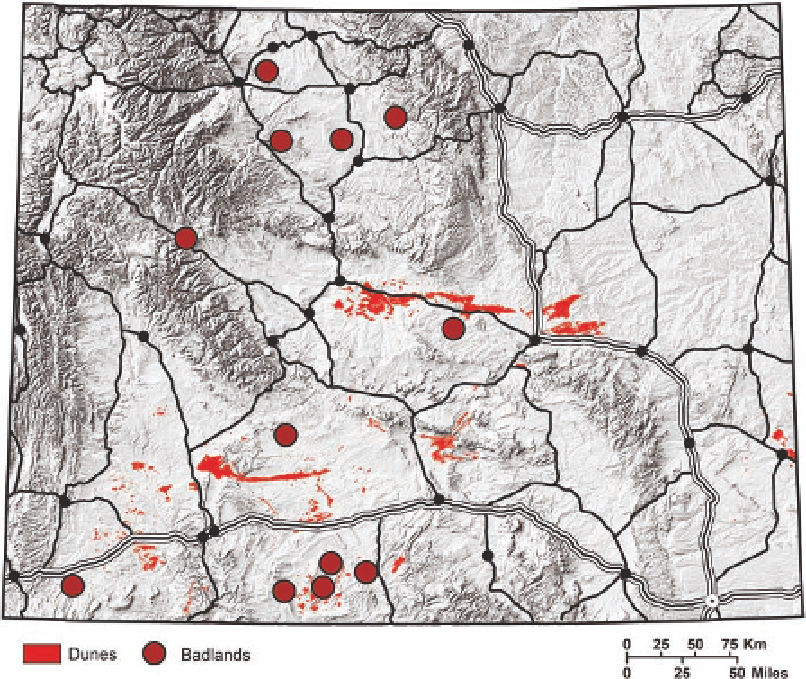Geoscience Reference
In-Depth Information
Fig. 9.1. Location of the primary
sand dunes and badlands in
Wyoming. Some dunes shown
on this map are stabilized by
vegetation. cartography by Ken
Driese.
wetlands form between the dunes. Missing from Wyo-
ming dunes is American beachgrass, commonly found
on inland dunes to the east and along the Atlantic and
Pacific coasts, and yellow wildrye, a common colonizer
in the dunes of southeastern idaho.
5
Succession in dune ecosystems is primarily a process
of soil stabilization (figs. 9.2-9.4). the continued growth
of pioneer species gradually leads to more organic
matter in the sand and more soil binding by the root
systems, which include the fungal filaments of mycor-
rhizae. the mere presence of the plants causes reduc-
tions in wind velocity, diminishing the extent of sand
movement. this stabilizing process continues as plant
cover increases; eventually the entire dune is covered
with plants. During stabilization, many other grasses,
forbs, and shrubs become common, including antelope
bitterbrush, big sagebrush, rabbitbrush, silver sage-
brush, spiny hopsage, and others. Some plants create
favorable microenvironments for others that could not
less common, but they persist in the community.
notably, the tallest, most vigorous stands of basin big
sagebrush in the region occur on stabilized dunes, such
as some parts of the Killpecker and Ferris dunes where
these shrubs grow to 6 feet tall or more. the tallest sage-
brush is typically on the leeward sides of dunes, where
snow accumulates. Such sagebrush woodlands provide
important cover for the elk that live in the area.
However, stabilized dunes are subject to the same
kinds of periodic disturbances important elsewhere—
traffic. Such disturbances lead to a decline in plant
vigor, subjecting small areas of the dune to rapid ero-
sion. the resulting blowout, created in a few days or
weeks, is eventually stabilized again through the per-
sistence and expansion of the pioneer species. Signifi-
cantly, the suppression of fires is thought to have greatly
increased the proportion of some dune fields that are
Destabilization occurs with drought, heavy grazing, or
the recreational use of all-terrain vehicles.
compared with surrounding grasslands and shrub-
lands, some parts of the dune environment are more

Search WWH ::

Custom Search